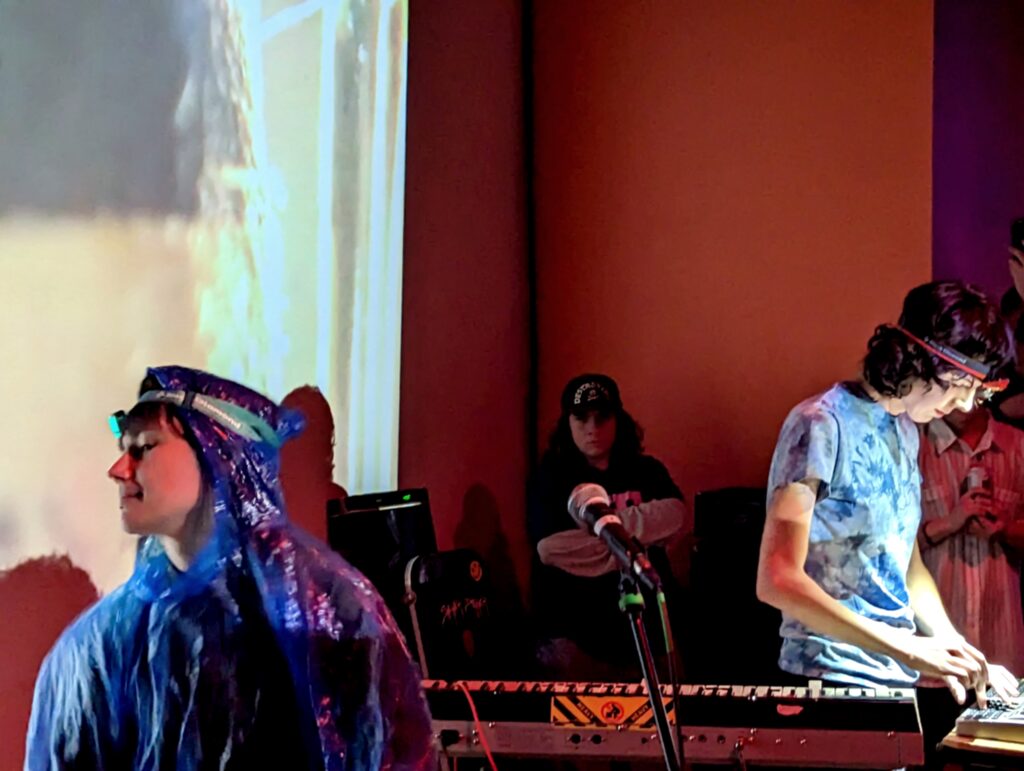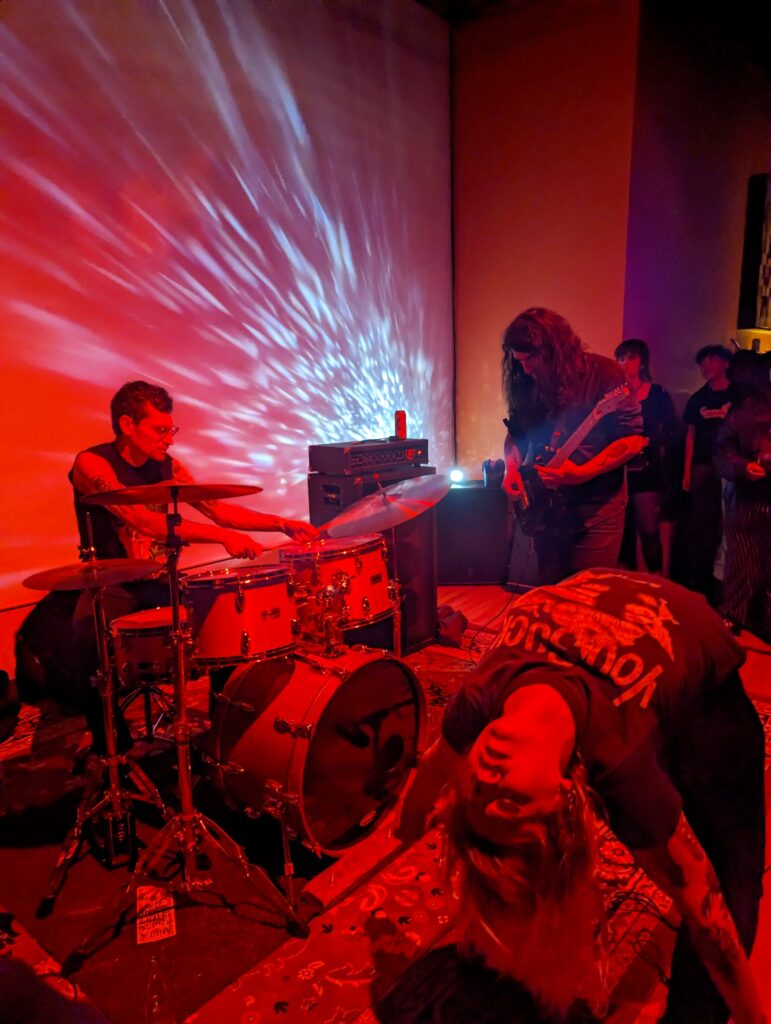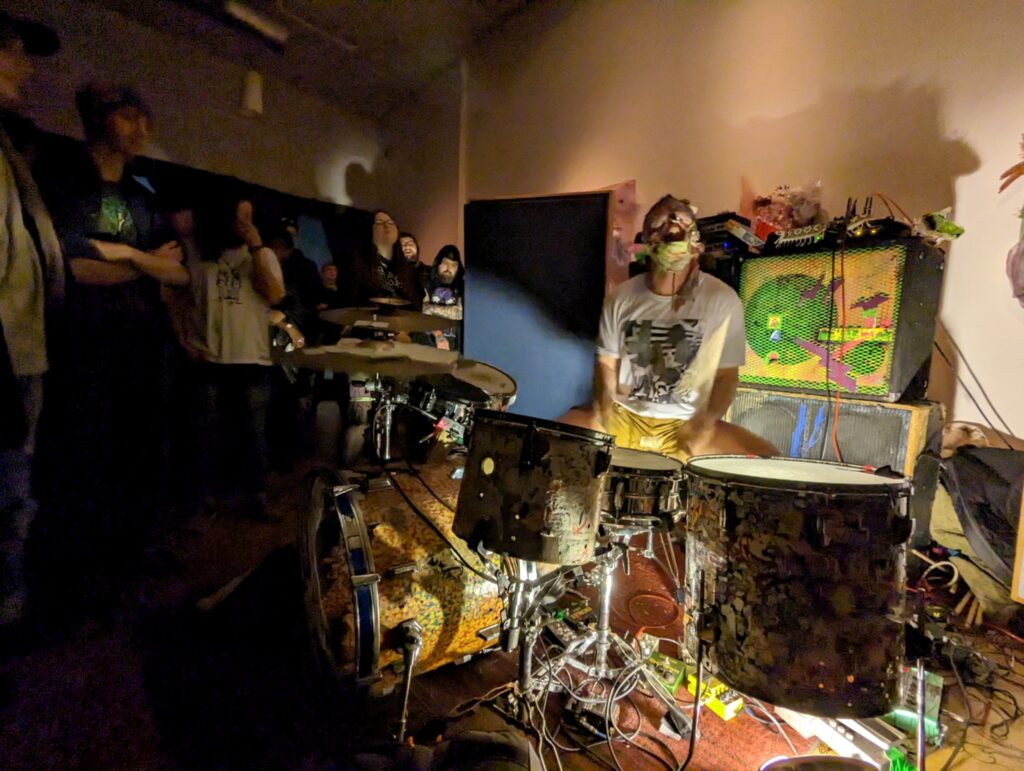
Providence’s music scene can be described as a series of overlapping and interlocking domains: a dynamic Venn diagram in which no circle holds its shape for long, and the areas of overlap often yield subtle, unexpected shades. This culture of cross-pollination and permeability allows for the free mingling of genre, sensibility and fanbase. Every so often a musician or group embodies a novel sound with qualities drawn from a critical mass of diverse tastes. When we — the denizens of this scene — see these performers come around, we can feel the consensus emerging, sense the tingle in the air, and recognize the part we must play. So we nominate, by means unofficial and organic, yet tangible and binding. We go to their shows, we buy their tapes, shirts and vinyl, we tell our friends, we follow their tours like proud parents and in time we announce to the world, “These musicians, they are us, and we are them, for they are the sound of Providence.”
The March 9 show at Pawtucket’s Machines with Magnets possessed just this sort of energy. As if the three piece art-pop band Baby, Baby (full name: BABY; BABY: EXPLORES THE REASONS WHY THAT GUM IS STILL ON THE SIDEWALK) were being confirmed in their ambassador status, sanctioned to carry the light of PVD’s bizarro sensibility to broad vistas and a new generation. Baby, Baby were enjoying some momentum coming into the show. They had played all over the country in the past year, including tour dates with Lightning Bolt, and were in the midst of yet another swing through the US. Their new LP, Food Near Me, Weather Tomorrow, was less than a week old, and had been reviewed favorably by Pitchfork, among others.
Opening for Baby, Baby at the sold-out event were Silver Dagger and Black Pus. Silver Dagger kicked off the festivities with a hot slab of rock & roll. The Dagger’s sound was driving and up-tempo, accented with surf and blues touches, and tempered with a certain gothic brooding. Frontwoman Laura was a charismatic force, crooning and cavorting, shouting, yelping and whipping her hair in wild arcs. In the absence of a raised stage, she prowled the front row of the audience, initiating the sort of immediate and reciprocal communion that is the universal language of underground music, spoken and understood in basements and bars and back lots all over the globe.

The second set of the night began with a sort of venue change – the crowd lured, Pied Piper style, into an adjoining room, proceeding in a polite but urgent procession to ascertain the source of the emergent sounds. Waiting in the art gallery, at the center of a disorienting jumble of drums, amplifiers, pedals and speaker cabinets, was Brian Chippendale — otherwise known as Black Pus. Chippendale is legendary in PVD — and well-regarded in underground music at large — for his role as one half of Lightning Bolt. Chippendale’s work as Black Pus is also prolific, stretching back to the mid-2000s and covering more than 10 official releases.
The mood of the set was casual. Chippendale bantered freely with the audience, effects pedals garbling the output of his mask-embedded microphone. He revealed that he had sliced his fingertips open while grasping a lamp earlier that night, and showed off fresh white bandages — delicate puffs of gauze that would be soaked in blood by the set’s end.
That night, it seemed, fidelity to any recorded version was a false god. The true and enduring tenets of Black Pus are that the entirety of the earth-shaking Sturm und Drang blowing your hair back in the moment is coming from one industrious man and his crazy, broken-looking gear, with no overdubs and often no script to speak of.
Audience reaction was split between rapt attention and wild moshing, some of which knocked the very art off the gallery walls (sorry Hallie Driscoll!). By the end of the set Chippendale was quite literally bleeding for his art, and thanking us for the privilege of doing so.

One gets the sense that critics have trouble gauging the level of seriousness in which Baby, Baby’s music was made, and the level appropriate for engaging with it. Is this goofy art rock made for goofing’s sake, or is there some deeper statement lurking in the silly? What does the irony meter say? How do I evaluate and write about this thing without looking like I missed the joke, or that I laughed when I shouldn’t have?
For any critics in the house, and for over-thinking fans, these internal debates melted away as Baby, Baby began their performance. Live, the band’s craft and effort are clear. The songs are not overly technical in the musical sense, but do involve some appreciable feats of signal processing. Each musician was outfitted with roughly a half-dozen audio processing devices, including drum machines, effects pedals, samplers, and even a telegraph key.
What comes through live, and not necessarily on the record, is the construction of these songs – every aural building block follows some well-worn path from electronic storage, instrument, or microphone, through the requisite effects and out into the mix in real time.
What makes Baby, Baby worth seeing and listening to is not just their means of production, but rather the musicality and catchiness of their compositions. During the performance, sam m-h spent much of the show crouched over pedals, turning knobs, but their guitar was always impeccably applied. Gabe C-D’s clever hands banged out clear, bright melodies on tiny rubber sampler buttons, and often introduced chord changes or harmonic interplays that were almost too affecting for this sort of cartoon art-pop. Lids B-day held the audience’s focus as frontperson, delivering their odd, sometimes relatable lyrics with a kind of art-school James Brown energy.
These strengths were not lost on the audience, who refused to take no for an answer when the set was complete. Fresh out of prepared songs, Baby, Baby bravely improvised a short piece to close out the night. One has to believe that more than a few fans drifting out to their cars or finishing up their drinks in the afterglow had the sense that they caught a band at a turning point, art-punks on the come up.


